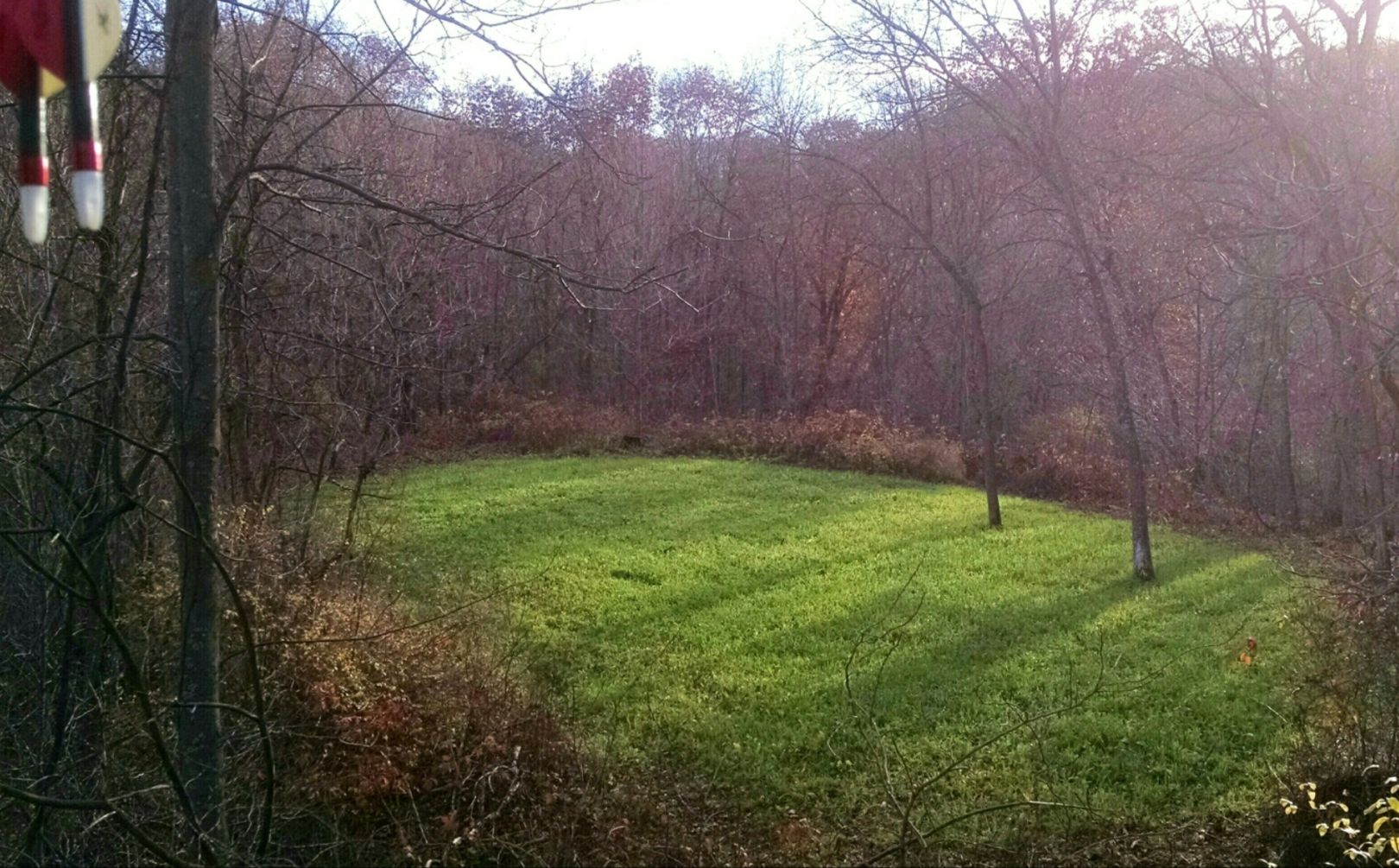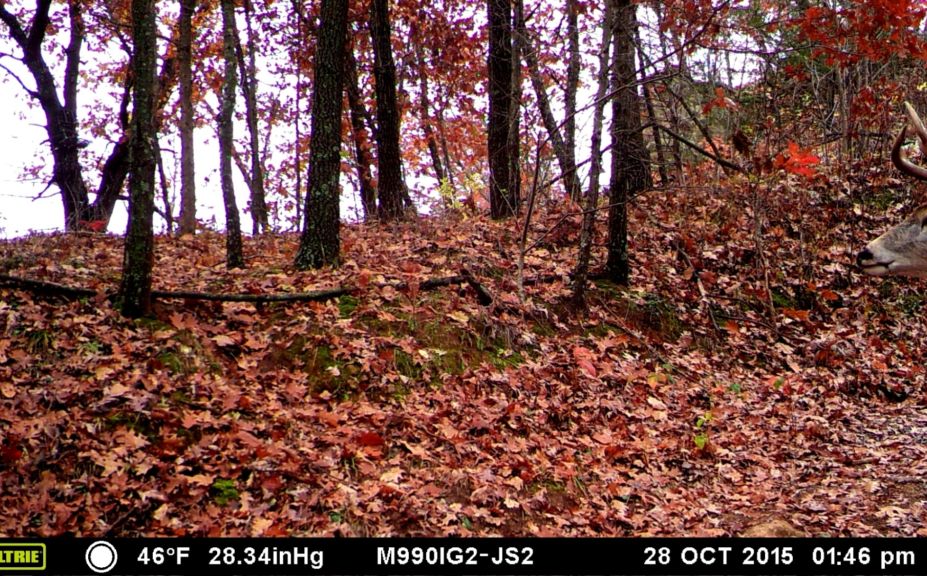
The process of choosing when to take to the woods to arrow a monster buck during the rut, can be hotly debated at times. But when a heavy wind and rain producing cold front combines with 15 degree temperature drops during early November? The backside of the front will be as good as it gets!
Before choosing which rut stand to sit in, I suggest that you visit one of two resources to determine exactly when and why to take a seat first:
"The 2015 Rut Will Be"
"Weekly Midwest Whitetail Prime Rut Forecast"
Top 5 Reasons For Choosing Which Rut Stand To Sit In
Over 80% of my top 25 buck harvests have taken place the first time using a particular treestand. But the process of using a specific tree stand goes much deeper than just waiting for 1 perfect time to use a stand before going in for the kill. Which rut stand should you climb into? Here are 5 reasons to help you make your choice:

*The tips in my Advanced Whitetail Strategy books can help you to find success this fall!
There are some great strategies to be found in my latest book, Mature Buck Success by Design.
1. Frequency of Use
The Best stand is often the one that has been used the Least on your land. In 12 years on my old WI lease I was fortunate enough to harvest 17 mature bucks during mostly the bow season. Would it come as a surprise to learn that I used 14 completely different stands to shoot those bucks out of? Your plan of attack should include zero favorites when it comes to choosing a stand. Often an average stand can turn into the hottest stand on the property merely because of the lack of hunting pressure that has been applied to "better" areas.
Some stand locations can take more pressure than others. For example a "killer" stand located in the middle of a thick, 40 acre parcel maybe OK for 1 sit depending on the wind, but you will have a hard time maintaining consistent harvest success. When a stand is located in a high quality pinch point at least 50-75 yards away from any kind of bedding area or food source, you can often hunt the stand a few time per week without having a very high level of negative impact. You have to ask yourself four important questions:
*Did I have to leave a lot of scent behind to use the stand?
*Was I likely to spook deer on the way into the stand, during the sit, or after the sit?
*Was my downwind protected while sitting in the stand?
*Could deer have easily heard me getting into my stand?
If you answered "Yes" to any one of those questions, the stand needs to sit for several days. However if you answered Yest to 3 or 4 of those questions, then the stand needs a break for up to 2 weeks. The problem is, that the Rut only last 2-3 weeks at best, often turning a high value invasive stand site, into a very low value stand opportunity following just 1 sit. Invasive stand sits will also effect within 100-200 yards around it too, effectively turning 40 acres of opportunity into 20 acres, literally overnight.
2. Time of Day
Each and every rut stand that you choose, has a value. Do you play poker? I don't, but I at least understand that certain combinations of cards hold certain percentages of expect outcome. Some hands have a very high liklihood of winning the pot, and some a very low. It pays to play poker with which stand you choose, in the deer woods!
Morning: Bedding Areas/Cruising
Mid Day: Cruising Areas/Pinchpoints
Evening: Pinchpoints/Food Sources
Do you have an all purpose stand that you can sit in, that contains the movements of bedding areas, cruising opportunities, pinchpoints and food sources? Awesome, you may just have the perfect All Day stand location. But folks, those stands are very few, and very far between. Instead, I like to make sure that each rut stand fits exactly into the appropriate category for the specific time of the day it is designed for. In fact, the best way to maintain the highest value for the entire day, is most often to move from one stand to the next, while choosing rut stands that specifically match the time of the day. "All Purpose" with anything in life, typically translates to above average in most categories, but not the best in any.

*Obviously I missed an opportunity by not sitting in this cruising stand location at the right time! To find out where you should plan your rut sits, check out "Cruising Setups For Rutting Bucks".
3. Access
Of course access is critical for each and every hunt, but do you consider the next hunt, the one after that, and so-on? Far to often hunters place all their eggs into one basket of a tree standsit, and live or die by that sit. The rut is a marathon, not a sprint and for those who plan ahead, they will find consistent success. Often I have texted my hunting partners on a Wednesday morning sit, something like "Tomorrow morning would be perfect for stand A, which will leave stand C open for Friday afternoon. I can remember one of my partners in the past sending back, "But I plan to kill a buck today". The problem is? By focusing purely on today, you can kill tomorrow's sit, and beyond. By planning your entire hunt based on access and frequency of stand use you can provide for yourself and an incredible map for success.
4. Winds
Sure...pick a stand where the wind is in your favor; how boring is that? Rut hunting equals cold front hunting in my whitetail world and when it comes to cold fronts, Northwest winds rule the day. Northwest winds are also the harshest winds, and at times can literally blow you off of a ridgetop stand. What has worked extremely well my own personal rut pursuits is to seek shelter from the wind, in the same locations that the deer herd is. Deer move quite well during the wind, but often they are increasing their movements to find shelter, and this is no different for a mature buck. Want to find some incredible deer hunting opportunity? Try throwing 80% of the herd into 30% of the land during the Peak Rut and see what happens! By focusing on the lee side of ridges, swamps, swales and woodlots, you may jsut be stepping into a gold mine of deer activity!
5. Enjoy the Pressure
If your neighbors are hitting the Peak Rut just as hard as you plan to, try gravitating your stand choices to the backside of heavy cover, on the opposite side of the pressure. If you have 2 or 3 neighbors hitting the woods heavily, than find the locations on your land where you can allow the deer to freely access onto your land, into heavy cover and then eventually into your lap. Sometimes this means accessing well out of your way to circle around and look back towards heavy cover strategically situated between you and your neighbor; but it is worth it!
Conclusion
Again, the rut is a marathon, not a sprint. Determining which rut stand to take a seat in should be viewed with a level of precision focus for capturing the highest value of potential opportunity by the hour, while hunting fresh stand locations designed to maximize both your current and future sits. Enjoy the Rut!